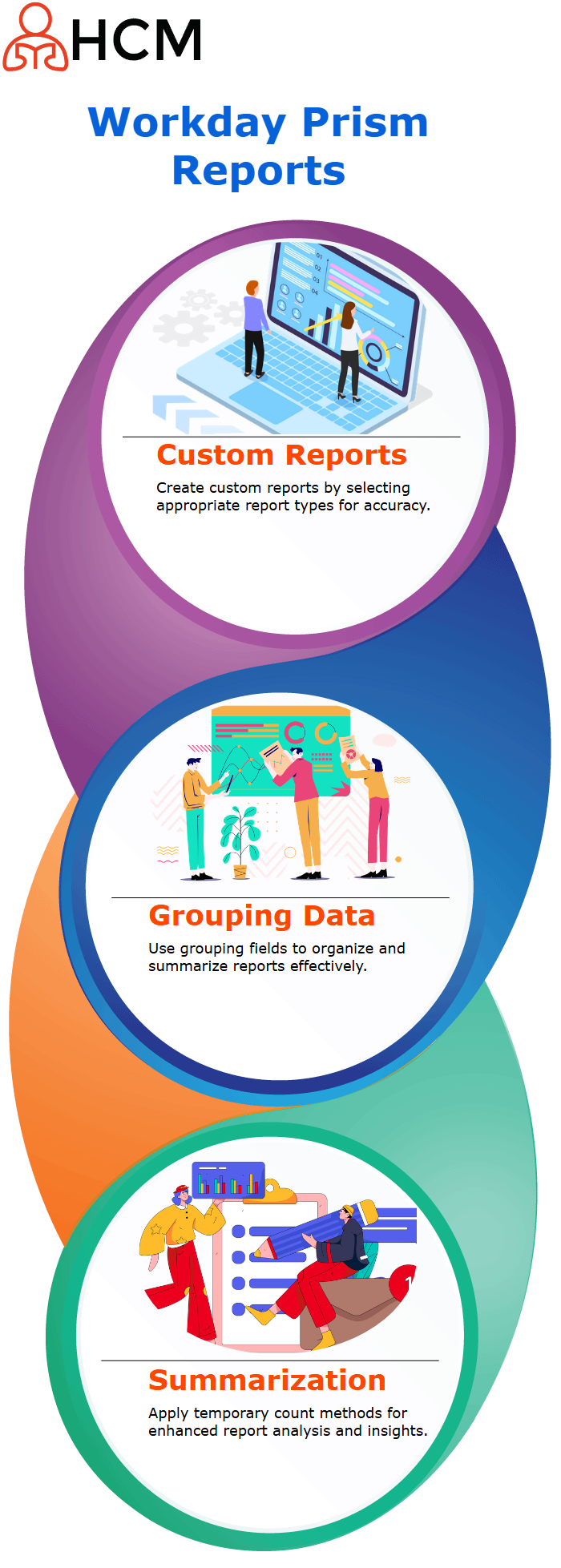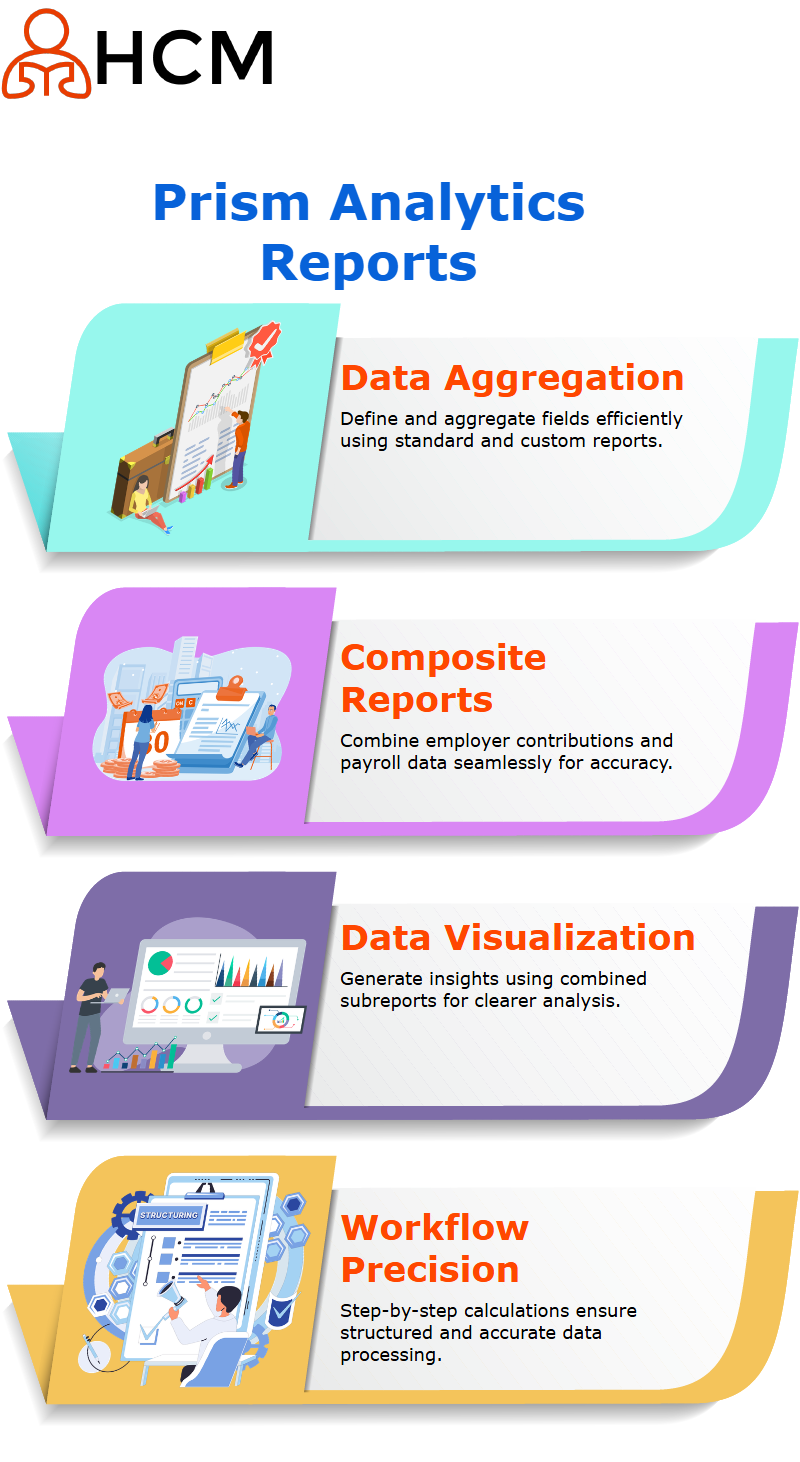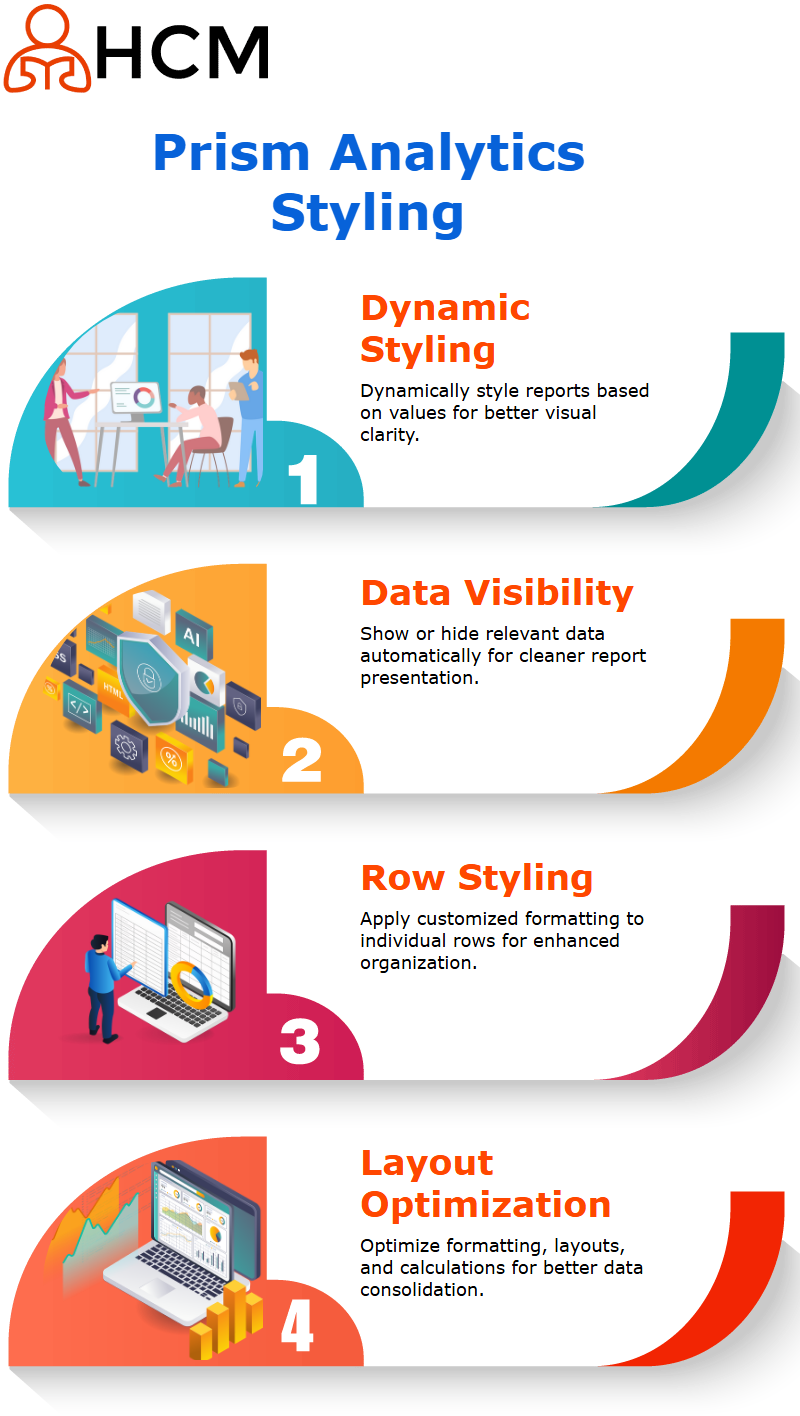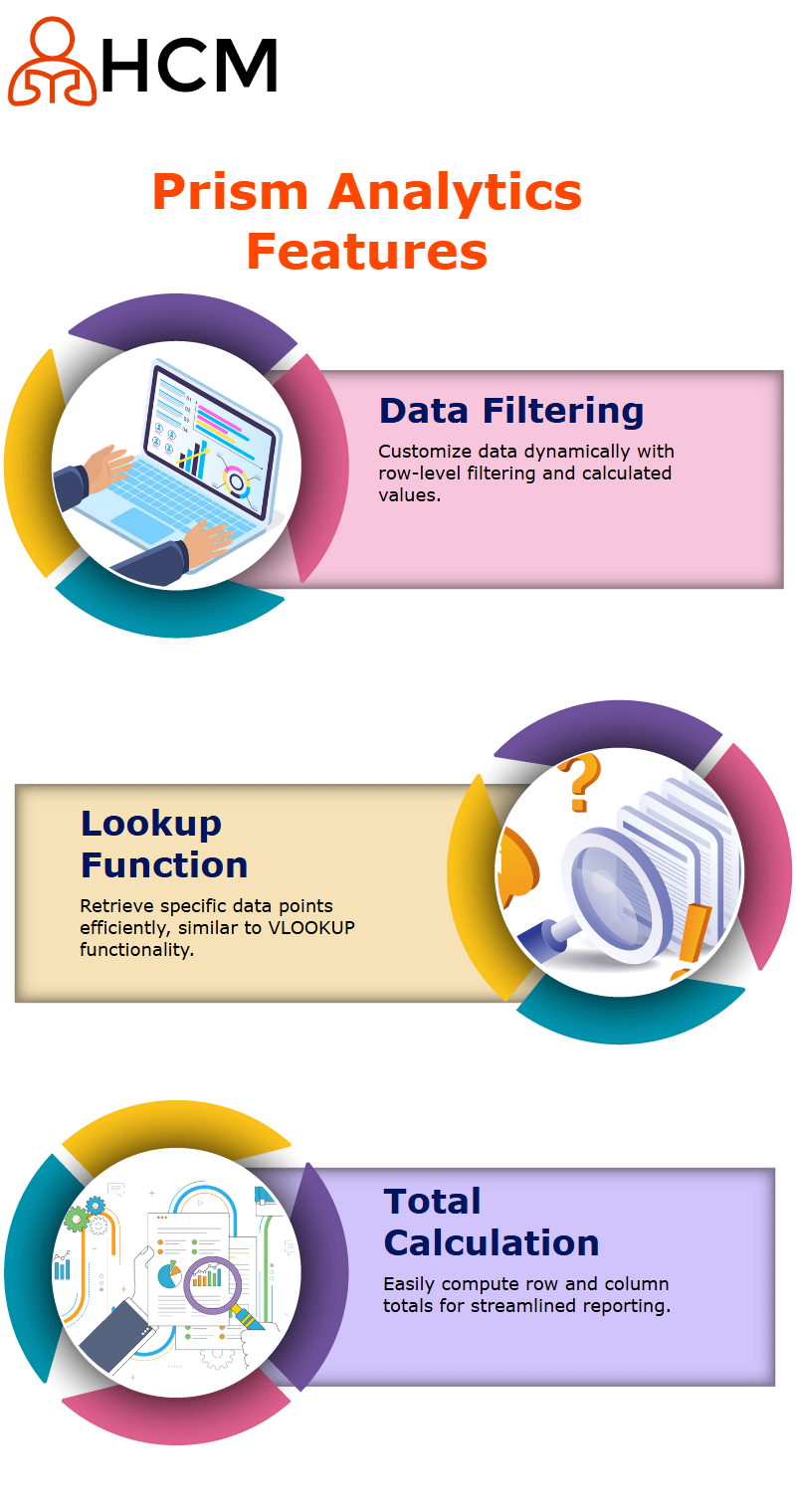Hyderabad’s #1 Choice for Workday Training in Hyderabad {2025}
Workday Prism Analytics Course in Hyderabad
Topic Overview
Custom Reports with Workday Prism Analytics
Let’s embark on an expedition through creating custom reports using Workday Prism Analytics. As in the previous report, the issue stemmed from the lack of selection of the report type, which was at the core of its problems.
The initial steps, influenced by techniques commonly in a Workday Prism Analytics course in Hyderabad, included creating two custom reports Sub Report One and another that compiled all standard reports available in the tenant’s database.
Grouping and Summarizing in Workday Prism Analytics
Workday Prism Analytics provided grouping and summarizing capabilities which helped achieve best practice results for analysis.
Workday Prism Analytics’ grouping parameters play an essential part. Report types were utilized as grouping fields in both reports, with output of those reports counted in order to summarize data – in particular for advanced reports where 2,244 records have been counted as output of these types of report types.
Extra Summarization in Workday Prism Analytics
While using Workday Prism Analytics for custom reports, an additional summarization was added known as temporary count. Standard reports only offer this summarization option, while custom reports introduced another summary called temporary count, which calculates the number of temporary employees.
Drawing from techniques often covered in a Workday Prism Analytics Course in Hyderabad. Workday Prism Analytics’ Eval expressions were utilized to detect temporary reports; any temporary report returned a value of one, otherwise zero was returned.
These temporary reports were then added up in total to obtain their total count.
Building Workday Prism Analytics Composite Reports
Once the concept is understood, creating a composite report in Workday Prism Analytics is straightforward. Once again using report type as composite, ensure a business object links both subreports standard reports have theirs set as ‘standard reports’ while custom one’s use ‘custom report.’
As emphasized in a Workday Prism Analytics Course in Hyderabad, linking both sub-reports together using report type as their linking object allows you to create one cohesive composite report.
Workday Prism Analytics for Custom Reporting
In Workday Prism Analytics, selecting an effective grouping field is vital when building custom reports. When selecting business objects as report types, their selection also determines their grouping parameter – this selection process mirrors how reports function.
According to the Workday Prism Analytics Course in Hyderabad, if the grouping in metrics reports differs – for instance a report may group by country while other reports by state – both types must be selected before selecting Ing reports to get to work on.
Workday Prism Analytics ensures compatibility even if there are multiple reports with different grouping parameters as long as all required fields have been selected.

Key Fields in Workday Prism Analytics
Establishing key fields when developing custom reports in Workday Prism Analytics can be a difficult challenge without predefined parameters for linking subreports together into one comprehensive report.
The necessity of this process is reinforced throughout the Workday Prism Analytics Course in Hyderabad. It requires this step for successful report compilation. When selecting key fields like report type as control fields for composite reports, these must serve as effective controls.
This field connects the composite report to its subreports. If grouping fields differ across reports, multiple control fields must be created; otherwise defining just a single control field will suffice.
Simplifying Workday Prism Analytics Parameter Management
Workday Prism Analytics features prompt sets to simplify parameter management. For instance, when passing in three reports that all require using “company” as their parameter value simultaneously a prompt set can be created instead of setting each report separately with this parameter setting.
Prompt sets in Workday Prism Analytics are optional; they should only be required when multiple reports share similar selection parameters.
By creating prompts within a composite report, parameters can easily be passed to all associated reports.
Establishing Control Fields in Workday Prism Analytics
In Workday Prism Analytics, the first step of creating custom reports involves setting a Control Field as its hub.
This field acts as the link between composite reports and their constituent subreports.
Control fields depend upon the business object selected during report creation.
Workday Prism Analytics Course in Hyderabad automatically assigns business objects selected as report types as control fields in any reports generated using them.
If multiple business objects are selected, each must define its own control field; its name can be tailored as required to provide more accurate reporting. It serves as an indispensable feature that provides flexibility.
Control Fields of Workday Prism Analytics and Sub Reports
Here’s an introduction to Workday Prism Analytics control fields and sub reports: they can be created based on report types.
With such control fields in place, sub reports can then be selected in order to bring data together into custom reports easily – simple yet powerful!
Workday Prism Analytics’ next step involves selecting sub reports. Sub reports allow us to retrieve relevant data for custom reports by matching up sub reports that share similar grouping fields as the control field we chose, when clicking prompts a selection of reports is shown built around those grouping fields.

Workday Prism Analytics Aggregating Data Fields
Workday Prism Analytics makes defining and aggregating data fields straightforward.
Starting off, standard reports serve as sub reports while you aggregate a field to count in one sub report before adding more columns using custom reports as sub reports and setting your aggregation options to count or temporary count aggregations.
Creating Workday Prism Analytics Composite Reports
Employer contributions are the heart of Workday Benefits.
When an employer pledges to contribute $200 toward one or more Workday Benefits plans, Workday Benefits automatically updates payroll calculations accordingly and allows for automatic deductions as part of its services.
The Workday Benefits course in Hyderabad explains how automatic deductions and earnings allocations are managed when employees enrol in plans.
When dealing with other payroll systems, such as ADP and Workday Benefits, you can also perform these tasks seamlessly without any issues or glitches.
Workday Prism Analytics Data Visualization
Once data from subreports have been combined in Workday Prism Analytics, their composite report displays comprehensive information.
With counts from standard and custom reports easily visualized across report types using Workday Prism Analytics’ distinctive capabilities, comprehensive insights become easily apparent.
Exploring Workday Prism Analytics
Here is an in-depth walkthrough of how data is organized and pulled using Workday Prism Analytics – an effective tool that facilitates easy data integration, calculations, and calculation processes.
Specifically, starting out is accomplished by specifying everything at column level before working upward.
No matter if it involves extracting data or performing calculations, work is performed step-by-step to guarantee precision and clarity of work done in each column.
With Workday Prism Analytics Course in Hyderabad, it is simple and straightforward to calculate totals – for instance when totalling transpose reports the standard and custom report types were counted individually before being added together for 43 total reports.
Utilizing Workday Prism Analytics, this calculation was easily carried out and the results presented clearly and arranged into an organized format.
Workday Prism Analytics allows the addition of empty columns where appropriate to help create better formatting, without showing redundant information.
An empty column was added after totalling out totals in order to achieve a cleaner layout.
All that is required is clicking ‘Define,’ selecting “Empty,” and voila an elegant layout is created in no time at all. Though seemingly minor, this feature adds sophistication and reader-friendliness to reports and improves their reader-friendliness.

Calculations with Workday Prism Analytics
Workday Prism Analytics simplifies complex calculations by enabling users to create computed columns like “Total Report Count” to sum values across columns, such as C2 to C3 (e.g., 10 + 33 = 43), with results shown in real time.
It supports a variety of operations including subtraction, division, multiplication, percentage calculations, and range settings, allowing deeper data analysis.
For example, the sum range feature can calculate totals from C2 to C10 across multiple columns.
In terms of data presentation, it allows pulling temporary reports from sub-reports with real-time counts like 326, 75, and 20.
Counts can be aggregated and formatted for readability, with options to control columns and group rows, making reports both user-friendly and visually appealing.
Enhancing Reports with Workday Prism Analytics
Workday Prism Analytics stands out when used for organizing data such as advanced matrix trending; its rows could be easily grouped seamlessly together for easier organization of rows within reports.
Control columns became indispensable tools for aligning data, while additional columns provided more specific insights.
With Workday Prism Analytics Course in Hyderabad ensures no detail goes undetected and every report is tailored precisely.
Even small adjustments such as creating duplicate column names or formatting control columns could be accomplished effortlessly.
Enhancing Reports with Workday Prism Analytics Styles
Have you ever considered how easily styling can enhance reports? With Workday Prism Analytics’ vast selection of standard and custom styles available to elevate how data is displayed? Below is an outline of my experiences using these styles.
Workday Prism Analytics features several predefined styles such as center alignment, right alignment, bolding and more for quick use.
What really sets it apart, however, is its ability to customize styles tailored specifically for individual requirements.
One style was defined using color and bold options which really highlighted report headers; such a small change could make an enormous impactful statement!
Adding Custom Styling in Workday Prism Analytics
Workday Prism Analytics’ versatility makes it ideal for custom styling experiments. Standard styles or unique ones such as making certain fields blue when their value equals zero can easily be applied or created and explored further.
Workday Prism Analytics’ styling features can be especially advantageous when creating composite reports, since additional formatting options might otherwise not be possible in other instances.
These reports allow for added styling options which would otherwise not be possible due to space restrictions.
By pulling data directly from custom reports into composite ones, styling can be modified at both row and column levels for greater control and customization.

Workday Prism Analytics Filtering and Calculations
One of the standout features in Workday Prism Analytics is its row-level customization capability, enabling data to be dynamically filtered or specific values calculated at any point in time.
Workday Prism Analytics’ Lookup Data feature works similarly to VLOOKUPs by providing easy retrieval and definition of filter criteria.
Utilising this function, users are able to quickly locate specific data points or easily define filter criteria while keeping their report looking neat and organized.
Workday Prism Analytics Streamlining Totals
Workday Prism Analytics’ unique ability to calculate totals at both row and column levels is another game-changer, making total calculation effortless for teams requiring totals at both rows and columns levels.
Row sum totals can easily be added up, for example by summarizing 10 and 33 to create 43 total rows; when column totals are needed as well, an update at either row or column level makes this happen quickly and effortlessly.
Opening reports in separate tabs to compare side-by-side can also help visualize changes that affect data presentation, and Workday Prism Analytics makes this easy to implement updates.
An experience with Workday Prism Analytics began by selecting a report type from a drop-down list.
The platform quickly provided data specific to the Advanced report type by applying row-level filters that overrode column filters, saving time and effort.
With the report type set to Advanced, relevant results were generated efficiently. To gain a broader perspective, additional report types such as Simple were added alongside Advanced.
After editing and running the report again, all data became visible, managed seamlessly by With Workday Prism Analytics Course in Hyderabad.
Customizing Reports with Workday Prism Analytics
Workday Prism Analytics’ beauty lies in its flexibility; options were explored to add lookup fields for emails and searches as well as grouping data to reveal trends.
Workday Prism Analytics enabled the addition of fields, data formatting and effective summarization using calculations.
By including empty rows with sum range functionality enabled automatically updating totals when rows changed automation at its finest!
Workday Prism Analytics makes styling reports effortless with its formatting options for reports – labelling cash totals or altering column appearance were simple ways of giving reports a professional and polished appearance.
Filtering and Formatting in Workday Prism Analytics
Conditional formatting with Workday Prism Analytics is truly impressive, offering extra layers of intelligence into reports by setting rules such as red highlighting when values drop below 200 and applying conditional rules intuitively to calculations or building calculations with conditional rules.
Drilling down into matrix and composite reports provides additional insights. Features explored through the Workday Prism Analytics Course in Hyderabad enhance how users apply these techniques.
Although composite reports don’t support charts, they provide excellent ways of presenting raw numbers clearly and digestibly an area in which Workday Prism Analytics excels.

Conditional Formatting through Workday Prism Analytics
Working with Workday Prism Analytics makes the power of conditional formatting abundantly clear: reports can be styled dynamically depending on cell values; for instance, if an evaluation evaluation to true, data may appear bolded and underlined or grey.
Workday Prism Analytics’ flexibility fosters clarity and visual engagement. An especially useful feature is being able to dynamically show or hide data depending on specific conditions.
Once a condition arises, visibility adjusts automatically so as to highlight only relevant data – this ensures a clean report.
Styling can automatically adapt, for instance applying grey, bolded and underlined formatting when certain conditions are met or changing to left-align styles when that criterion has not been fulfilled – providing more precise control of visual representation.
Every individual row can be formatted individually; when used as part of composite reports, empty rows provide the ideal canvas for applying conditional formatting.
Ruled rows remain distinct from standard rows to maintain an organized and tidy layout. For instance, conditions could be set up so as to highlight values in row 4, column 2 when they exceed zero by applying styling only when data exceeds 0.
Report Management Workday Prism Analytics
Workday Prism Analytics allows for advanced formatting and layout configurations. It excels in consolidating data from multiple subreports, performing calculations efficiently, and producing stunning composite reports.
No matter if it be conditional formatting of empty rows or customizing styles for specific data points, this tool radically revolutionises report management.
A calculation could even be created that automatically derives percentages from temporary reports into composite reports directly for reporting purposes.
Workday Prism Analytics shines when it comes to styling composite reports. Offering unrestricted support for advanced layouts and conditional formatting options without restrictions or limits, its virtual ports enable it to create letters such as compensation revision letters.
Although their purposes differ greatly, virtual ports and Prism Analytics work seamlessly together to meet diverse reporting needs.

Vishwak
I write because the fight to learn is just as crucial as the knowledge acquired; every click, every mistake, every little success.
